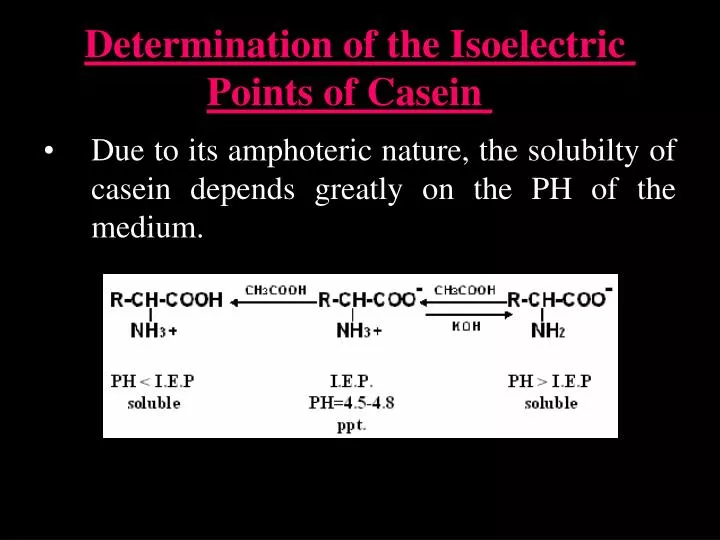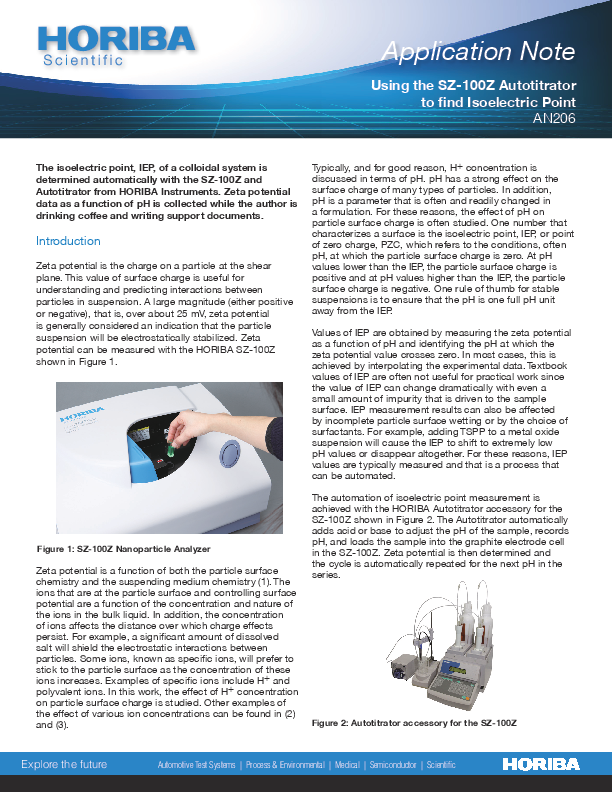

The pipette was then quickly blown out each time as much of the casein enters the test tube each time. Fourth, 1ml of casein 0.5g/1 in 0.1M sodium acetate was pipetted into each test tube.Third, the designated amount of 1.0 acetic acid according to table 1 was added to test tube 9.Second, the designated amounts of 1.0 M acetic acid according to table 1 was added to test tubes 3,4,5,6,7 and 8.If the process was carries out the other way round, the higher concentration of the 1.0 M acid would raise the acidity level of the 0/01 acid. In order to reduce the chances of contamination, the designated amounts of 0.01M acetic acid was pipetted first to test tubes 1 and 2 because the 0.01 M acetic acid is the least concentrated acid of the 3 acids.

The acetic acid was then pipetted into each test tube according to the values in the table 1.
#Determination of isoelectric point free
The ability to conduct measurements in free solution thus provides the basis for the rapid determination of isoelectric points of proteins under a wide variety of solution conditions and in small volumes. To demonstrate the general approachability of this platform, they have measured the isoelectric points of representative set of seven proteins, bovine serum albumin, β-lactoglobulin, ribonuclease A, ovalbumin, human transferrin, ubiquitin and myoglobin in microlitre sample volumes. In particular, in this approach, the pH of the electrolyte solution is modulated in time rather than in space, as in the case for conventional determinations of the isoelectric point. Here, Łapińska et al., introduce a gradient-free approach, exploiting a microfluidic platform which allows us to perform rapid pH change on chip and probe the electrophoretic mobility of species in a controlled field. The majority of conventional methods for the determination of the isoelectric point of a molecule rely on the use of spatial gradients in pH, although significant practical challenges are associated with such techniques, notably the difficulty in generating a stable and well controlled pH gradient. The isoelectric point (pI) of a protein is a key characteristic that influences its overall electrostatic behavior.


 0 kommentar(er)
0 kommentar(er)
